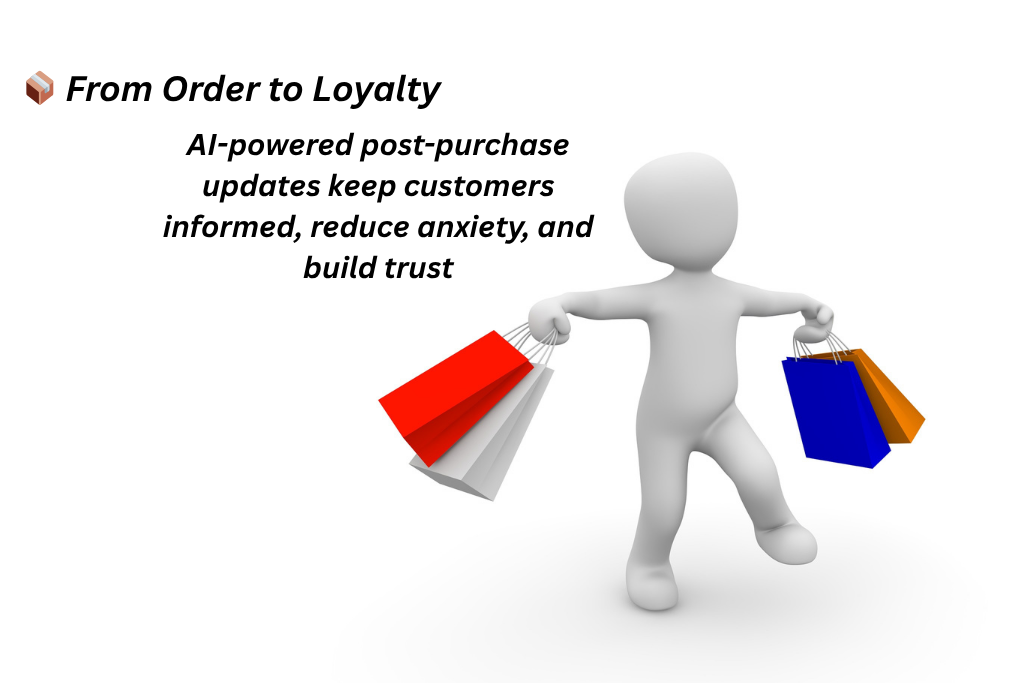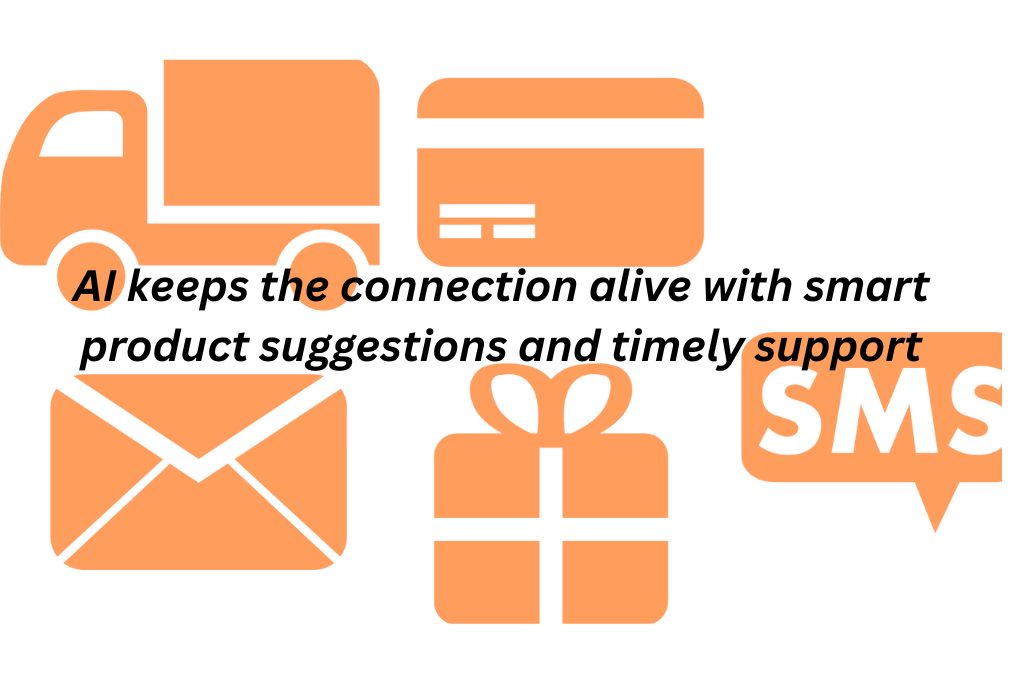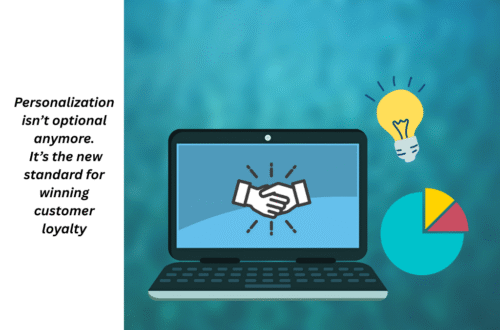
Why the AI Post-Purchase Experience Is the Key to Repeat Sales
In today’s competitive marketing, you have to cater to your customers’ individual preferences, and the AI-post purchase experience is your key. The digital landscape has changed the perception of a customer towards your brand. Now they are not just passive recipients. Instead, they want their desires to be personalized. If you don’t understand the importance of customer engagement through automation, you will fail to effectively drive sustainable growth.
The bad post-purchase experiences, such as poor communication or shipping delays, lead to customer churn and loss of revenue.This also harms the brand reputation. In previous discusiions, we explored the use of AI in gathering data, targeting the audience, and delivering customized content tailored to their individual needs. Now, in this blog, let’s explore how AI post-purchase experience is building a long-term relationship with customers and boosting repeat sales.
Why the Post-Purchase Experience Matters
The post-purchase experience is about how customers perceive your brand. The emotional drivers of a customer include
- Fear of a bad shopping experience, or missing out on the great deal
- Pleasure of finding the great deal
- Guilt of impulsive buying or overspending
In the post-purchase experience customer goes through different steps after making a purchase. This includes
- Order confirmation
- Tracking
- Delivery updates
- Customer service
- Order returns
A positive post-purchase experience leads to more sales and boosts customer loyalty, while a bad one will have a bad impression on customers, leading to customer churn.
Customers’ purchasing decisions heavily depend upon their emotions after purchase. Their during and post-purchase emotions decide their experience with the brand and whether or not they will buy in the future.
Since the cost of acquiring new customers is more than retaining the existing ones, brands need to pay attention to their post-purchase experience. Moreover, the poor experience not only leads to dissatisfaction but also impacts on brand’s perception.

Key Areas to Improve AI Post-Purchase Experience
To build an effective AI post-purchase experience, you must move a step beyond basic marketing messaging to using your customers’ data more strategically. This involves creating dynamic customer segments based on how they shop from your brand. The pattern includes
- How frequently do they make purchases
- Their preferred products
- Their average spending habit
- The way they interact with your brand when making a purchase
With the help of this pattern, you can segment your audience and stay focused during campaigns. After segmenting the audience, use AI to work on these key areas to enhance their post-purchase experience.
Personalized Order Updates & Notifications
Use AI to calculate and deliver accurate estimated delivery times. You can do this by analyzing real-time shipping data, location, and carrier performance. This indicates customers and reduces anxiety around their orders.
AI automatically updates the order. The brands share their updated shipping notifications and confirmation that match the customer’s favorite tone. This improves customer experience by how they like to get information.
Intelligent Product Recommendations
AI-generated selling is based on past purchases and behavior. This process involves using machine learning to identify patterns in customer behavior and purchase history. It enables you to suggest complementary or higher-end products preferred by your customers. For example, after they buy a laptop, recommend a compatible mouse, sleeve, or software subscription.
In addition, make individual product bundles or provide special discounts. Tailored content provides individual customer preferences, shopping habits, and loyalty status. This not only increases the average sequence value but also deepens customer engagement.

AI-Powered Customer Support
Use chatbots that remember user issues and purchase history. Such AI chatbots access a customer’s past interactions, orders, and support history. They help you to deliver faster with more context-aware support to reduce friction and create a more personalized support experience.
Use AI to analyze emotion for more relevant reactions. With AI, you can detect emotional signs in customer messages (eg, frustration or confusion). They also decide whether increased issues should be assigned to human agents when needed, or give more sympathetic reactions to reduce concerns. This helps to maintain customer satisfaction and brand reputation.
Post-Purchase Content Personalization
Depending on the specific product purchased by a customer, send materials automatically, which helps them achieve the most. For example, if anyone buys a new espresso machine, how to provide video or brochuring tips.
For digital services, use AI to give a step-by-step onboarding experience to users’ goals and skill levels. This may include individual walkthroughs, milestone-based emails, or interactive product tours.
Smart Review Request and Reaction Ends
Instead of sending a review request at a certain time, use AI to analyze if there is a possibility of responding to the customer. This interaction delivery should be based on the confirmation of delivery, the deadline of product use, and pre-engagement habits.
AI automatically optimizes surveys in tone, length, and questions based on users’ interaction with your brand. Happy customers may receive a quick NPS-style survey, while low-fitted users may be asked for open-ended feedback to highlight the pain points.
Rewarding With Loyalty Programs
Rewarding the customers who want to interact with your brand is the best way to add value to the customer experience. You can reward for more than one purchase. For example, provide them access to new products or exclusive discounts when they refer you to a friend, write a review, or place an order through the app.
Streamline the Workflow
While automating the workflow, such as responding to customer behavior, churn rate, and maintaining customer loyalty, remember that AI sometimes gives a robotic sensation. That’s why, when sending post-purchase messages through AI
- Send relevant care instructions immediately after a purchase
- Follow up at meaningful moments based on the product’s lifecycle
- Reach out when customer behavior indicates they might need support

AI Technologies that Enable Boosting Post-Purchase Experience
Here’s how AI post-purchase experience works with the examples of their use cases.
Machine Learning and Predictive Analytics
Machine learning (ML) analyzes a huge amount of historical and behavioral data. It uses this data to predict future customer needs, such as when they may require a refill, upgrade, or customer assistance. On the other hand, future analytics may estimate the risk of churning.
Examples of Their Use Cases:
- Suggesting supplementary products (cross-cell/up-cell) based on recent shopping.
- Predicting delivery delays and informing customers in advance.
- Automatically triggering loyalty rewards after repeated purchases.
Natural Language Processing (NLP)
NLP powers AI-driven chatbots and virtual assistants. NLP understands and responds to customer inquiries in real time, even after the sale. It helps brands analyze customer feedback to detect sentiment and improve service.
Examples of Their Use Cases:
- 24/7 support through conversational AI bots that handle returns, refunds, or product guidance.
- Analyzing negative reviews to trigger customer recovery actions.
- Auto-generating personalized email responses or follow-ups based on ticket content.
Real-Time Personalization Engines
These use real-time behavior data to distribute dynamic materials and recommendations in AI-powered engine emails, web, and apps. They are favorable for the developed journey of each customer, helping brands to be relevant after sales.
Examples of Their Use Cases:
- Recommending how-to videos or product tutorials based on the purchased item.
- Personalizing loyalty dashboards with real-time point updates and tailored rewards.
- Offering discounts for accessories or add-ons shortly after the initial purchase.
Conclusion
Using AI to improve your customers’ post-purchase experience is a smart move. We suggest that you strategically leverage artificial intelligence to boost your customers’ experience after they purchase to keep them happy and loyal.







One Comment
Pingback: